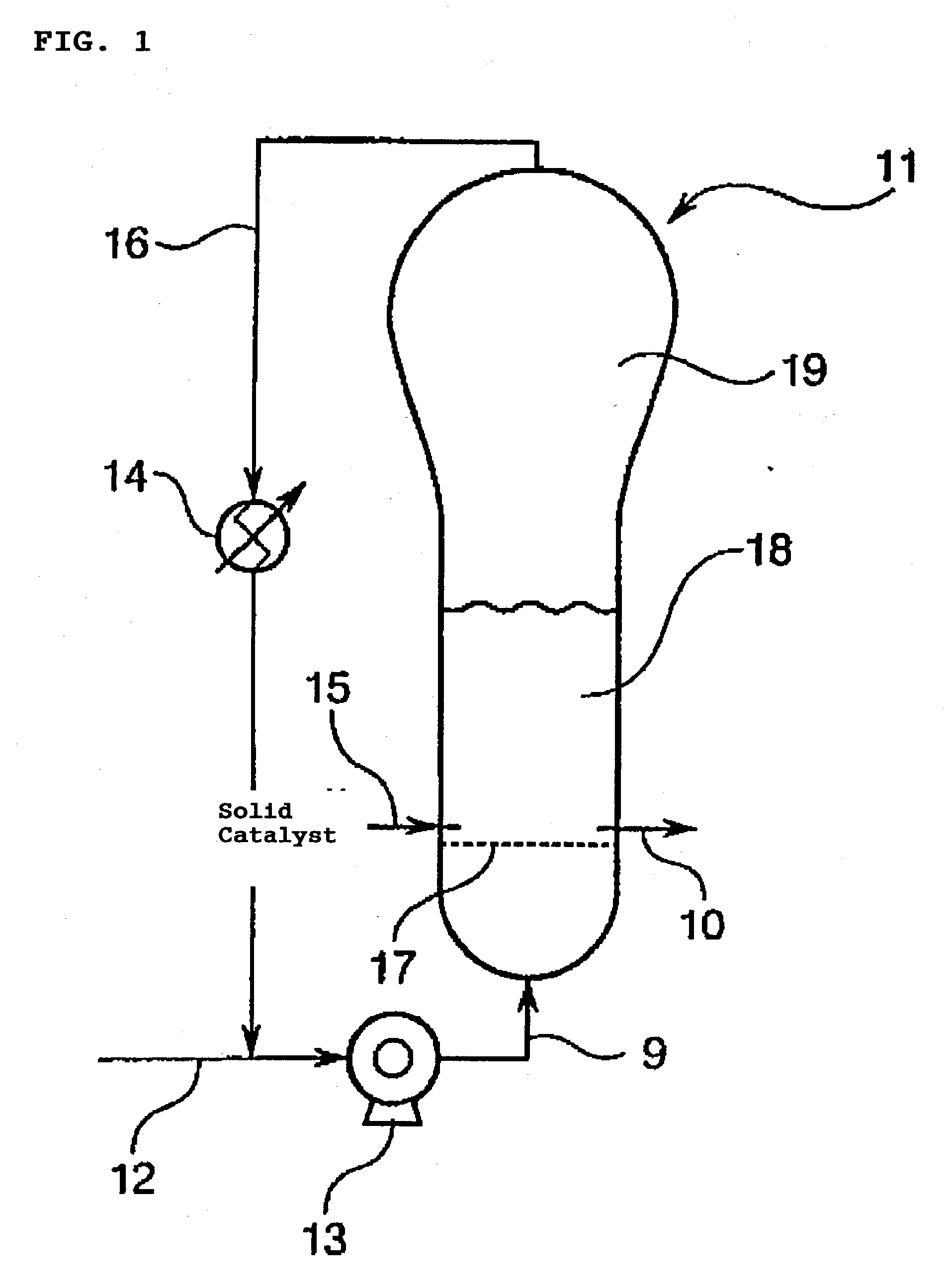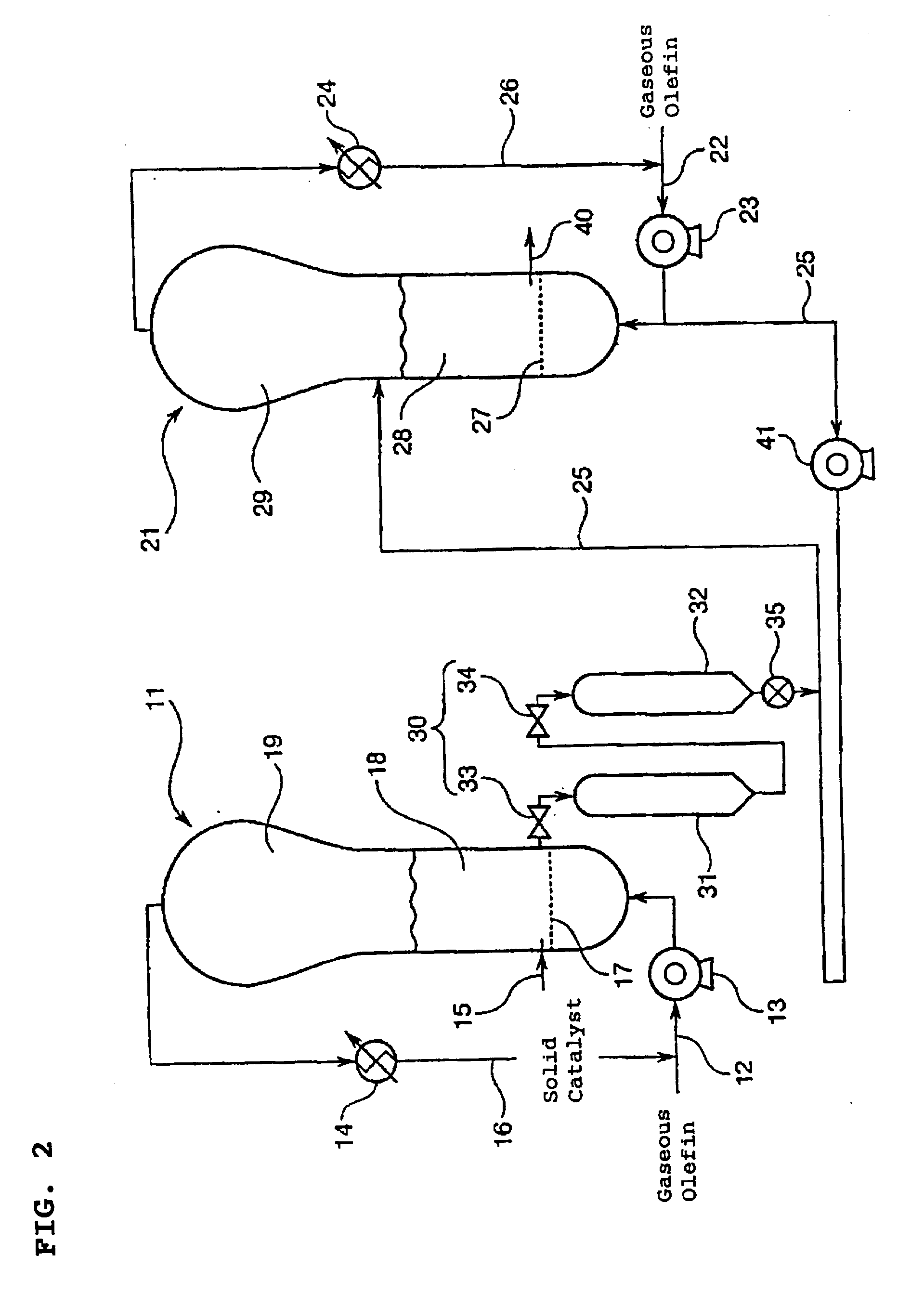Process for producing olefinic polymer
a technology of olefinic polymer and polymer, which is applied in the direction of chemical/physical processes, chemistry apparatus and processes, etc., can solve the problems of difficult to evenly remove heat large problem concerning the removal of polymerization heat, and difficulty in removing heat evenly from the fluidized bed, etc., to achieve high heat removal efficiency and high melting efficiency
- Summary
- Abstract
- Description
- Claims
- Application Information
AI Technical Summary
Benefits of technology
Problems solved by technology
Method used
Image
Examples
example 1
[0170] (Preparation of a Solid Catalyst Component)
[0171] 10 kg of silica (SiO.sub.2) which had been dried at 250.degree. c. for 10 hours was suspended in 154 l of toluene, which was then cooled to 0.degree. c. To the suspension solution was added dropwise 50.5 l of a toluene solution of methylaluminoxane (Al=1.52 mol / l) over one hour with keeping the temperature of the suspension solution at 0 to 5.degree. c. In succession, the resulting solution was kept at 0.degree. c. for 30 minutes, then raised to 95.degree. c. over 1.5 hours and kept at 95.degree. c. for 4 hours.
[0172] Thereafter, the solution was dropped to 60.degree. c. and the supernatant was removed by decantation. The solid catalyst component obtained in this manner was washed twice with toluene and then redispersed in 100 l of toluene to be a total amount of 160 l.
[0173] 22.0 l of a toluene solution of bis(1,3-n-butylmethylcyclopentadien-yl)zirconium dichloride (Zr=25.7 mmol / l) was added dropwise to the obtained suspensio...
PUM
| Property | Measurement | Unit |
|---|---|---|
| pressure | aaaaa | aaaaa |
| pressure | aaaaa | aaaaa |
| apex angle θ2 | aaaaa | aaaaa |
Abstract
Description
Claims
Application Information
 Login to View More
Login to View More - R&D
- Intellectual Property
- Life Sciences
- Materials
- Tech Scout
- Unparalleled Data Quality
- Higher Quality Content
- 60% Fewer Hallucinations
Browse by: Latest US Patents, China's latest patents, Technical Efficacy Thesaurus, Application Domain, Technology Topic, Popular Technical Reports.
© 2025 PatSnap. All rights reserved.Legal|Privacy policy|Modern Slavery Act Transparency Statement|Sitemap|About US| Contact US: help@patsnap.com



